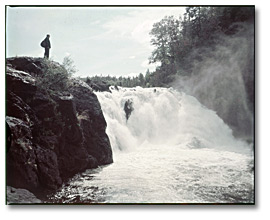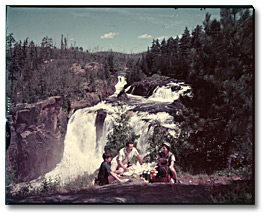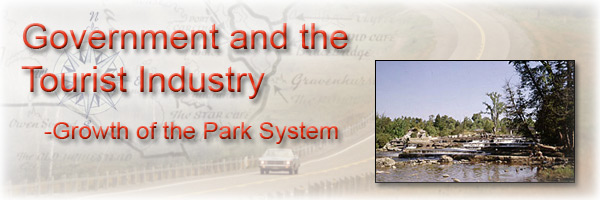
Table of Contents
A Wilderness Paradise | Impact of Improved Transportation: Waterways
Impact of Improved Transportation: The Spread of the Railway
Impact of Improved Transportation: The Lure of the Wilderness
Impact of Improved Transportation: Cottages, Camps and City Parks
Government and the Tourism Industry: Growth of the Park System
Government and the Tourism Industry: Promotion and Infrastructure
Government and the Tourism Industry: Expansion and Diversification
| The Government of Ontario recognized the importance of protecting wilderness and scenic places for reasons of conservation and tourism. As early as the 1880s it passed legislation to establish parks. | ||||||||||||||||
Not surprisingly, Niagara Falls was first to catch the government’s attention. In 1885 the Niagara Falls Park Act for the “Preservation of the Natural Scenery” was passed to create the Niagara Falls Park Commission and Queen Victoria Park was established shortly afterwards with gardens, walkways, and facilities. And it has been a favourite tourist destination ever since. Click to see a larger image (111K) |
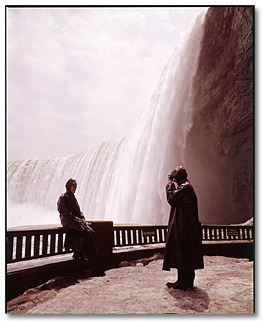 |
|||||||||||||||
|
||||||||||||||||
|
The first provincial parks were set up in the late 1800s and early 1900s. Algonquin Park was created in 1893 as "a public park and forest reservation, fish and game preserve, health resort and pleasure ground." Tom Thomson, a close associate of the artists who would form the Group of Seven, was one of many to be possessed by the rugged landscape of its rocky ridges, tall pines, and numerous lakes and rivers. The artist, Paraskeva Clark, also found Algonquin Park captivating.
Click to see a larger image (188K) Algonquin Morning, 1954 Paraskeva Clark (1898-1986) Oil on canvas Government of Ontario Art Collection, 619709 |
|
|||||||||||||||
|
||||||||||||||||
| The video clip below from the 1952 film, Sprit of Algonquin, introduces the setting of the park. | ||||||||||||||||
Spirit of Algonquin, 1962 Ontario Department of Travel & Publicity 16mm colour film Reference Code : RG 5-2-0-18 Archives of Ontario |
|
|||||||||||||||
| Other parks soon followed: Rondeau on Lake Erie (1894) excellent for camping, hunting and picnics; Quetico Provincial Park west of Lake Superior (1913), a remote and primeval wilderness; Long Point Provincial Park in Lake Erie, now a refuge and stopping place for migrating birds. | ||||||||||||||||
|
||||||||||||||||
|
Ontario Sun Parlour [1959?] |
|||||||||||||||
The idea of a parks system was formalized in the Ontario Parks Act of 1913. By the 1950s there were 8 provincial parks: Algonquin, Quetico, Long Point, Rondeau, Presqu’ile, Ipperwash, Lake Superior and Sibley (Sleeping Giant). |
|
|||||||||||||||
|
|
|||||||||||||||
| In 1954, in response to a heightened demand for more recreational areas, Ontario set up the Parks Branch. | ||||||||||||||||
|
The next 20 years saw the creation of nearly 100 new parks for recreation and conservation. Click to see a larger image (120K) |
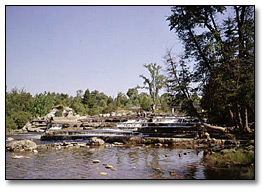 |
|||||||||||||||
A Wilderness Paradise | Impact of Improved Transportation: Waterways
Impact of Improved Transportation: The Spread of the Railway
Impact of Improved Transportation: The Lure of the Wilderness
Impact of Improved Transportation: Cottages, Camps and City Parks
Government and the Tourism Industry: Growth of the Park System
Government and the Tourism Industry: Promotion and Infrastructure
Government and the Tourism Industry: Expansion and Diversification
![Photo: Niagara Falls, Ontario, [ca. 1890]](pics/1877_niagara_1890_510.jpg)
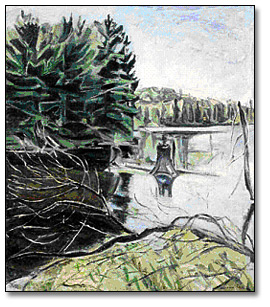
![Photo: Tom Thomson on Canoe Lake, Algonquin Provincial Park, [ca. 1916]](pics/10309_tom_thompson_270.jpg)
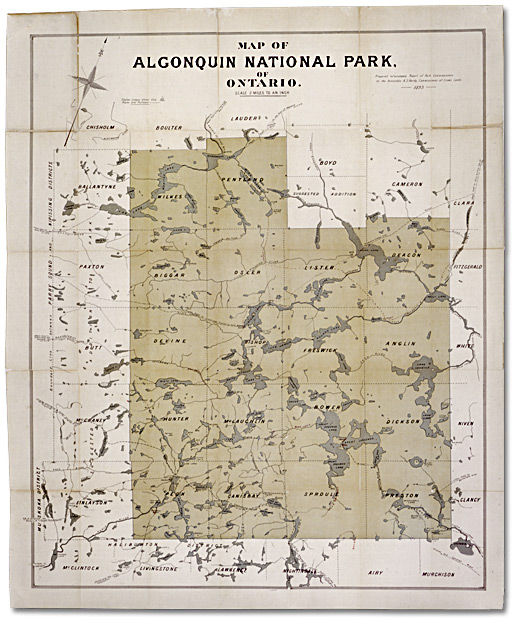
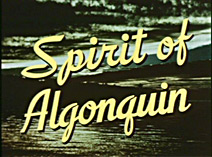
![Photo: Beach at Rondeau Park, [ca. 1925]](pics/12480_rondeau_beach_520.jpg)
![Video Clip: Ontario Sun Parlour [1959?]](pics/video_frame_rondeau.jpg)
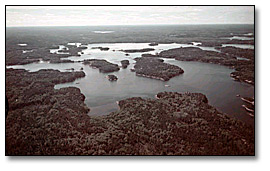
![Photo: A camp scene at Quetico Park, [ca. 1920]](pics/4156_quetico_camp_270.jpg)
